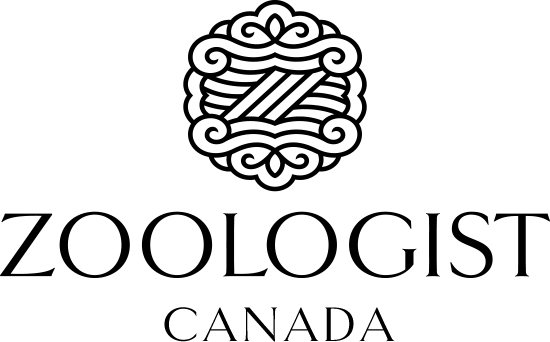May 21, 2019
StephanMatthews.com
Touches of violet and pepper bridge wonderfully into the base of Chameleon but a subtle use of saffron adds a spiciness to this tropical-esque scent. The development of the fragrance sees the perfect combination of vetiver and patchouli washed over by a smooth sandalwood, although the support from the musk cannot be overlooked.
Ventvenir.com
Ylang-ylang gives this perfume its heady floral scent, that is beautifully complemented by the note of mango, which make the opening of Chameleon a little bit sweet and so delightful.
Colognoisseur.com
"Chameleon opens with a bouquet of fruity notes representing a tropical style. Threads of aquatic breezes blow through. The ylang-ylang rises to meet the fruits. In the first moments it smells like many ylang-ylang centric fruity florals. Rather quickly it drops into a lower harmonic as that quality I enjoy in ylang-ylang begins to be noticeable. I have enjoyed this because it was the basis of so many vintage perfumes where it would be paired with animalic ingredients for an incredible sensuality."
Fragrantica.com
"Brilliant citrus, juicy mango and tart starfruit coalesce into this bright, fruity accord balanced with the sparkle of pink peppercorns. Lush violet leaves weave a backdrop of jungle foliage thick and verdant. Warm frangipani rises to join buttery ylang-ylang as they are woven together deftly with threads of saffron and vines of young creamy jasmine by perfumer Dan Pescio into what wafts like a true island lei."
March 01, 2019
Seb Duke is a fine art photographer from Toronto whose body of work focuses on colorful bubbles. We first met in early 2014 through fragrance-related Facebook groups and we quickly became friends. Over the last few years, he has gained widespread recognition for his colorful bubble photography under the name “The Big in the Small”. A collaboration between Zoologist and The Big in the Small had been on the back of my mind for quite some time. With the launch of Chameleon, I just knew his colorful bubbles would be the perfect opportunity to expand upon the world of this animal and fragrance.So, I asked him to create a set of prints in order to bring Chameleon’s world to life in a visual way. Before we get to the interview, here are a couple of his pieces. I promise you, if you’re not familiar with his work, you’ve never seen anything quite like it. And then, read on further to see the four pieces he has created for the launch!
– Victor Wong
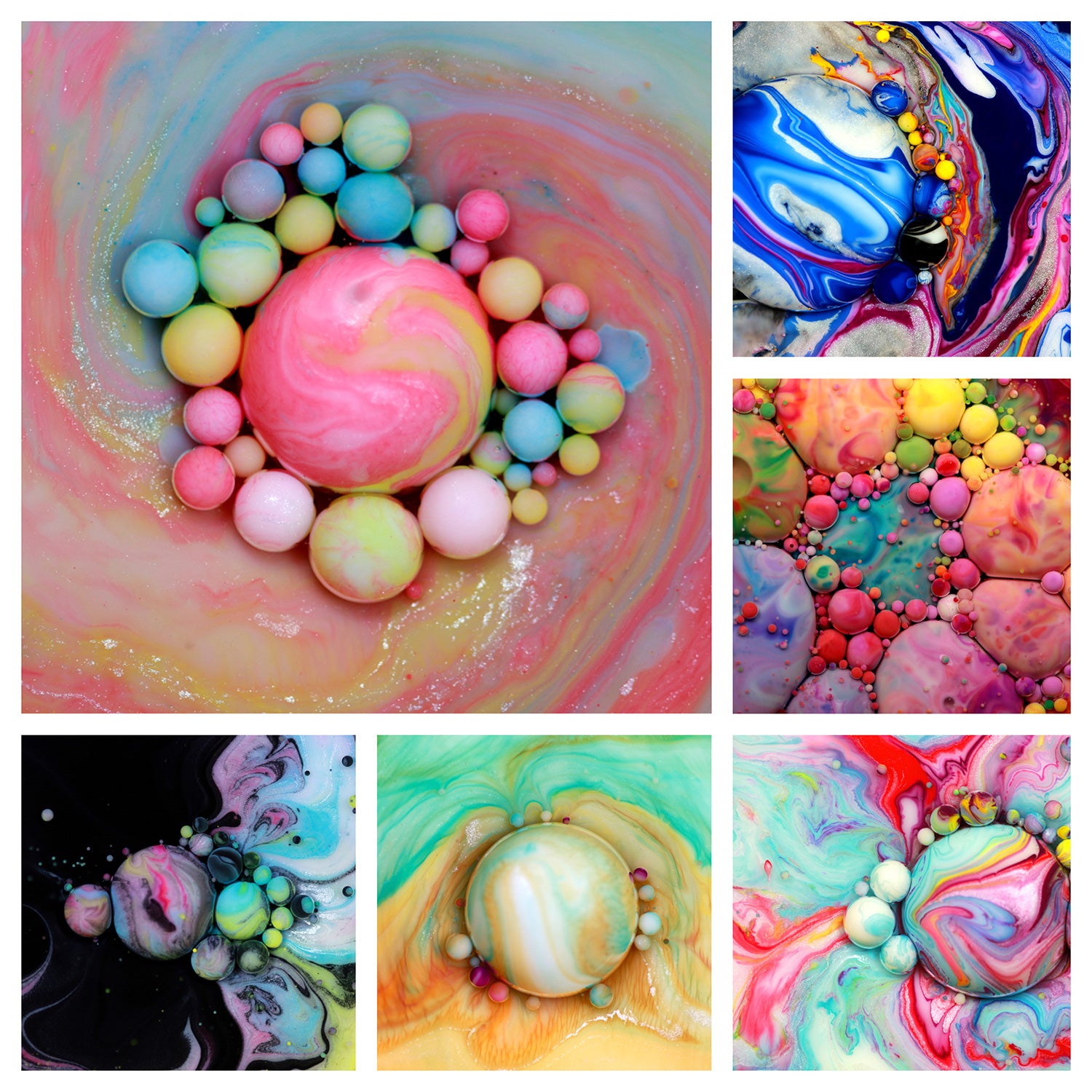
Ok, I have to ask. How do you create these bubbles?
Oh, this is definitely the question that people ask the most! Everyone wants to know!
All I can say is that it’s a mix of three ingredients in equal parts: Love, Magic and Secrets!
You see, I like to keep the mystery alive. In today’s world, with YouTube and the likes, you can find a tutorial for almost anything. To me, that takes the magic away from certain things, such as art. There are a few things left in this world that are unexplained, I like to keep it this way.
One of my missions is to spread a sense of wonder through my art, and I feel like sharing the process takes that sense of wonder away.
But, in a nutshell, without saying too much about the process, it involves mixing different liquids together in a way to encapsulate them into bubbles. Then, once I’ve mixed the liquids together, I grab my camera and use a macro lens to shoot these bubbles up close and then turn those pictures into art prints! So, it’s a mix of fluid dynamics and highly technical and precise photography.
Your art is extremely unique, how did you discover this form of photography?
It was a total fluke. Before I got into photography, I used to be really into music. I played music, recorded music, released music and shot music videos.
Two years ago, I wanted to shoot a music video for one of my bands, but I was out of budget for props or actors. I owned a good DSLR camera and a lens that allowed me to shoot macro, and I thought mixing liquids together might create cool and colorful interactions that would look good on video.
So, I looked around the house and the shed for household liquid and started mixing them together. Quickly, I became obsessed. I sold all my music gear and reinvested it all into photography, and that’s been my life ever since!
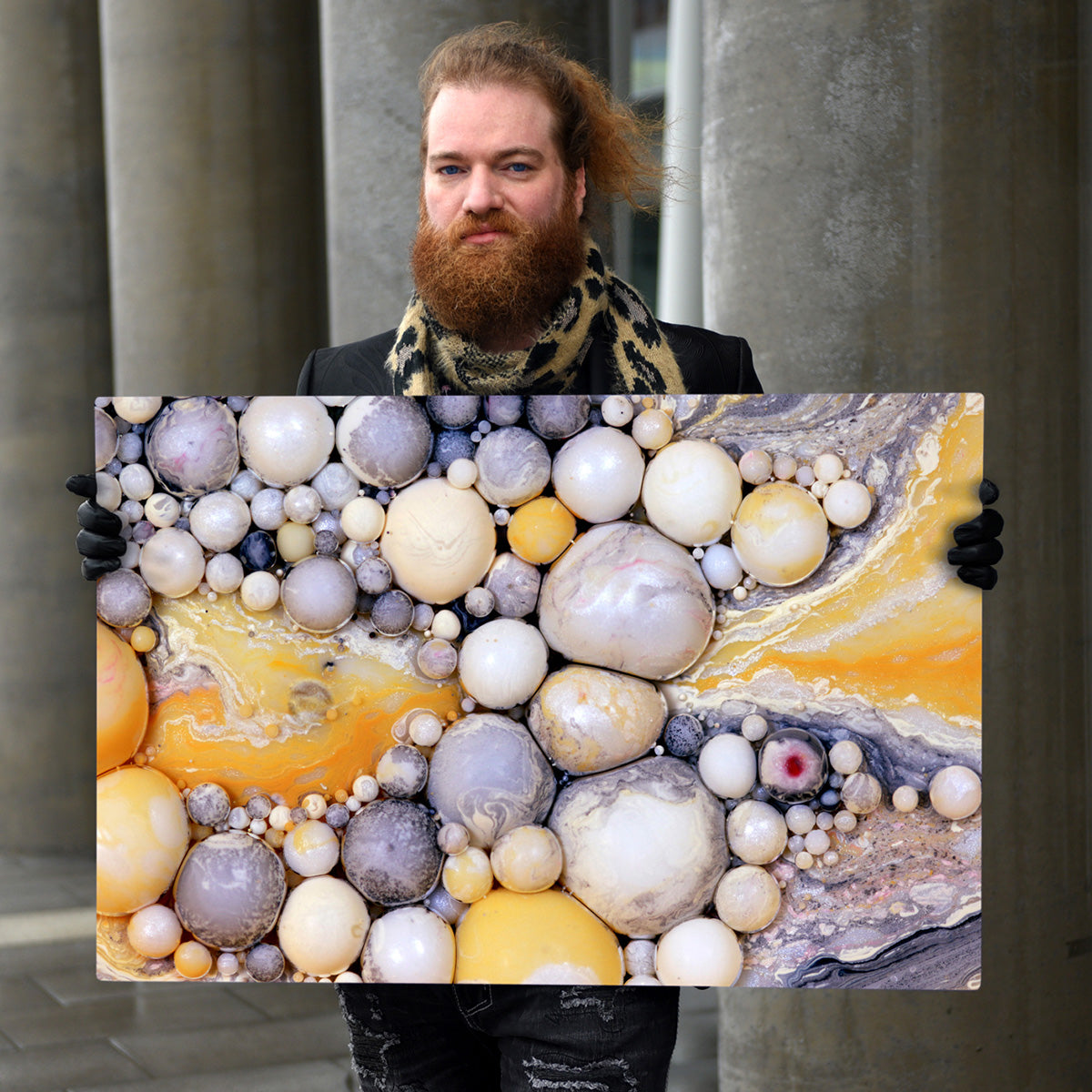
What do you find so fascinating about liquids?
I’m fascinated that liquids can be used as vectors for many things. Medicine for well-being. Alcohol for pleasure. Fuel for energy.
But, beyond that, I’m really fascinated that it can be a vector for beauty in different ways. And it’s exactly what bridges the gap between my photography work and the olfactory art: liquids here are the vector for beauty. You and I share the same purpose: creating beauty using liquids as a vehicle, we just happen draw on different senses!
What keeps on drawing you back to creating bubbles?
Beyond enjoying working with liquids, I am attracted to spheres as a shape.
It’s been said that they are the perfect shape and I wholeheartedly agree with that. I find them aesthetically pleasing. When you add the colorful whirls, twirls and swirls and all the volutes, marbling and billowing that happens, it complements the spheres in a very unique way.
I’ve been working in my studio creating bubbles every day for the last two years and I still am as fascinated every day as the first day. Maybe now that I’m actually good at it, I enjoy it even more!
You create under the name “The Big in the Small” – What is the meaning of this name?
One of the things I enjoy out of my art is that you lose the sense of scale when you’re looking at it. The bubble you’re looking at could be the size of a grapefruit, a golf ball or a marble, and it’s impossible for you to know that. Sometimes they’re as small as a pearl.
When you take a look at the solar system, it’s very similar to the structure of an atom, with a very dense core (neutron+protons/Sun), and elements gravitating around it (electrons/planets) and a whole lot of emptiness.
That’s what the name “The Big in the Small” encapsulates and celebrates: the intricate details in the infinitely small.
What’s the piece you’re the proudest of?
There are quite a few, but to me they are the ones that come with a meaningful story.
Let me tell you about this piece called “The Truth Emerges”. To me, it has become a wonderful reminder that sometimes, art can be about more than just art. It can take on a very human aspect that I could never have imagined when I first started creating bubbles in my kitchen back in 2016.
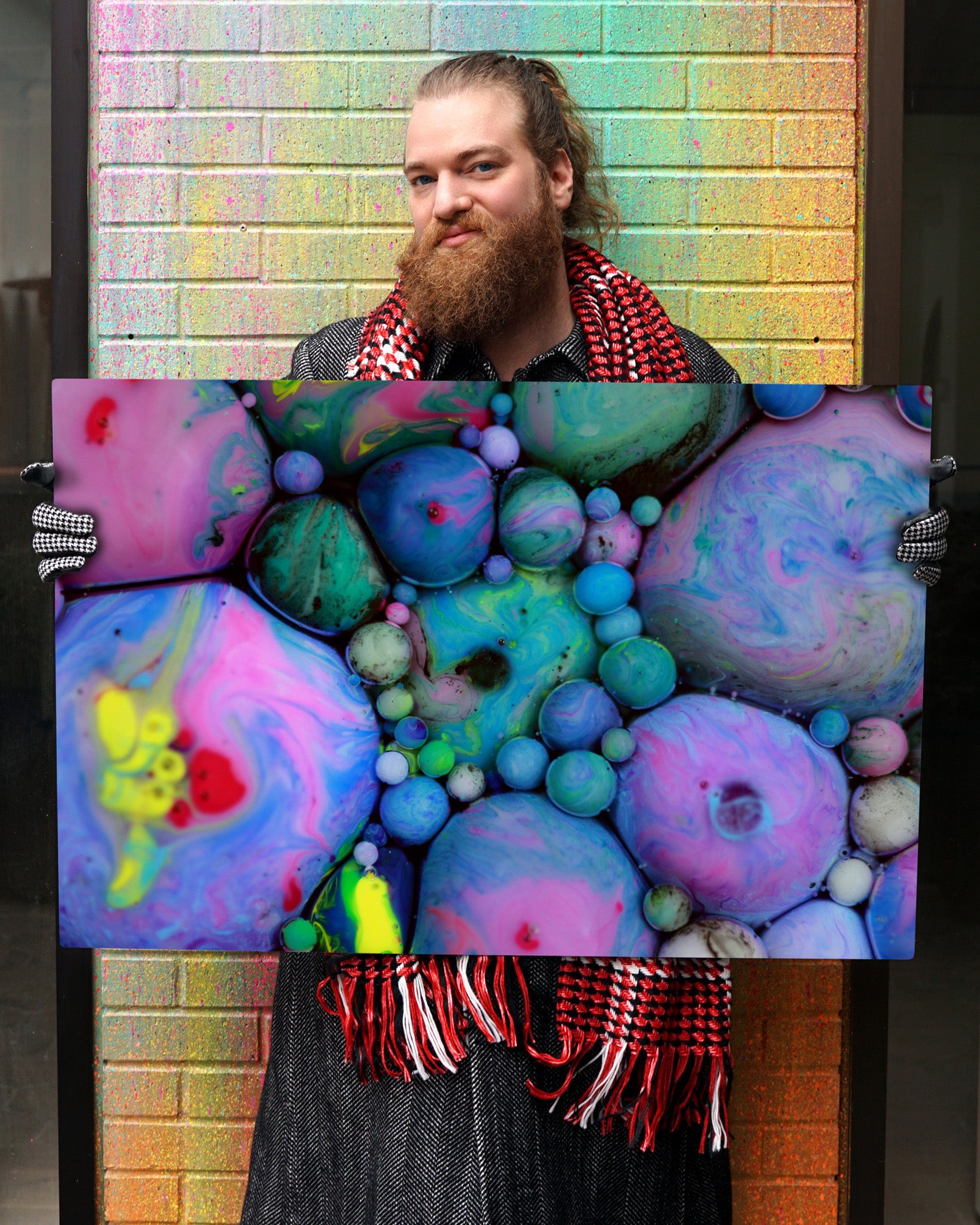
A few months ago, a US-based client purchased a large print of this piece called “The Truth Emerges”. I shipped her order, thank you very much… and I thought that would be the end of it.
But, she recently wrote me to tell me her story. See, that client is a child psychologist, and she purchased this piece in order to hang in her office where she treats her patients. I have to admit, I thought that was pretty cool to begin with.
The part that really touched me was this: she noticed that her young patients’ eyes tended to gravitate towards the piece the first time they stepped into her office. Now, more often then not, she now uses this piece to initiate conversations with young kids that go in for a first consult, as an ice-breaker. She uses their sense of wonder as they look at this piece in order to get them to bypass their initial shyness!!!
How amazing is that?
As an artist, I spend a lot of time alone in the studio trying to take the vision in my mind and bring it to life. I know I enjoy creating my art, I know I enjoy looking at it: that’s why I do it. If I didn’t enjoy creating this art, then I wouldn’t do it.
But, knowing other people enjoy it enough to purchase a print and put it up on their wall? That’s extra gravy. And on top of that, knowing that my art helps people, that’s something I never would have expected, and that’s what makes it so much more meaningful for me!
All in all, it’s a beautiful reminder that sometimes, art is more than art!
I’ve seen your work featured in many media outlets, I even remember you being on national TV here in Canada. How have things evolved in the last two years?
It’s been absolutely mind-blowing. I have not spent much time marketing my art; most of my time has been spent creating.
Every opportunity that has arisen out of my photography activities have come out of people approaching me, not me seeking them out. I’ve been extremely fortunate so far with my work being featured on national TV, in many media such as Business Insider.
I pinch myself every day. I mean, I definitely wasn’t the popular kid in high school, so that recognition and attention is a bit alien to me.
When I started doing this in my kitchen, I had no idea it would blow up. I started doing it because I loved it, and to be honest with you, even if I did not have experienced any widespread success, I’d still be doing it. Success has been a byproduct, not a pursuit… But I’m enjoying every moment of it!
When I first approached you with the idea of creating a series of limited prints to portray Chameleon, how did you tackle this project?
Since we’re friends, I’ve had the privilege of being able to observe how you tackle the creation of your fragrances, and how you bring them to life, from inception to execution.
I used a very similar approach: I tried to picture the environment that a chameleon would live in, I watched many documentair studied its traits, its behaviour and recreated this mental image through colorful bubbles.
Oh, and here’s a fun fact that I hadn’t even shared with you until now. Remember how you gave me a bottle of Chameleon for inspiration when we started working on this collaboration? While I did use it for inspiration, every piece in this collaboration was created using a spray of Chameleon in the liquid mixture!
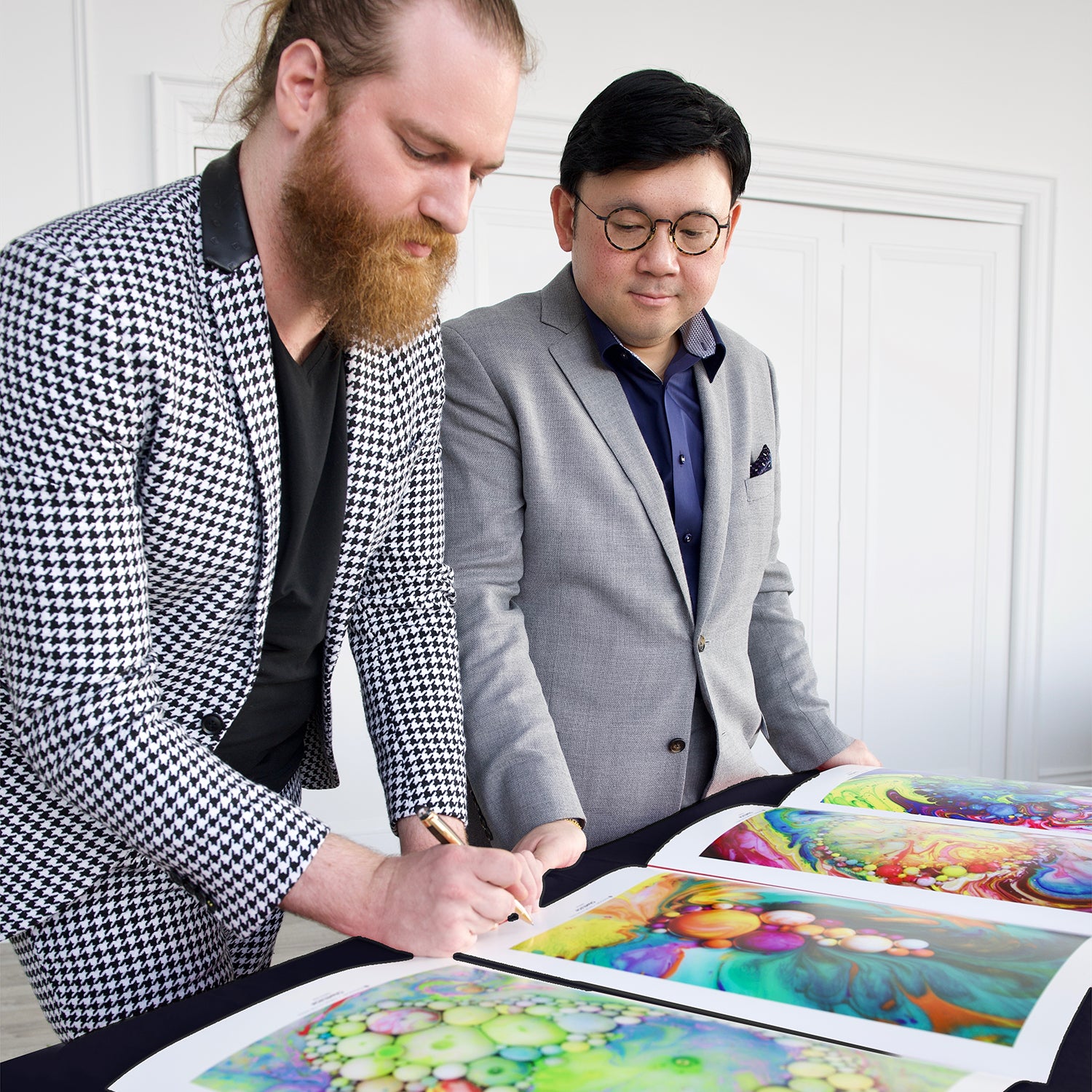
Can you tell us a little more about the set of three prints you created for this collaboration?
All four pieces were designed to represent a specific aspect of a Chameleon’s environment, or life. The intent was to bring a Chameleon’s world to life in an abstract way, through my visual language that is colorful bubbles!
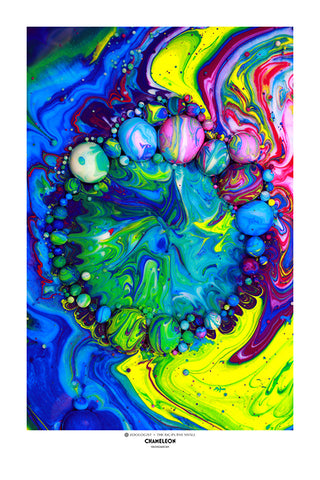 First let’s starting the journey into a Chameleon’s world by exploring the island it inhabits. Madagascar is a unique island, an environment that allowed for so much of diversity in species to occur. Such a fascinating island…
First let’s starting the journey into a Chameleon’s world by exploring the island it inhabits. Madagascar is a unique island, an environment that allowed for so much of diversity in species to occur. Such a fascinating island…
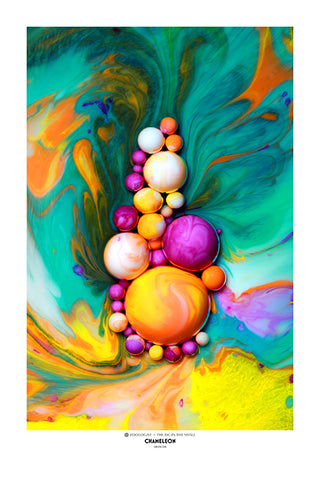 Madagascar is not only famous for its many different species of chameleons, it is also well known for being host to over 1,000 different species of orchids. The queen flowers’ legendary beauty is an integral part of a chameleon’s environment, and I really wanted to portray it by shaping the bubbles into an orchid that stands out within a setting that resembles Madagascar’s flora.
Madagascar is not only famous for its many different species of chameleons, it is also well known for being host to over 1,000 different species of orchids. The queen flowers’ legendary beauty is an integral part of a chameleon’s environment, and I really wanted to portray it by shaping the bubbles into an orchid that stands out within a setting that resembles Madagascar’s flora.
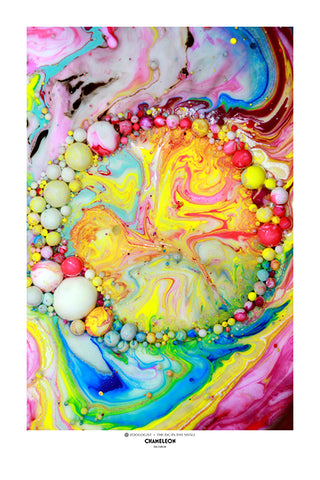 Madagascar is host to two seasons: a cool dry season from May to October also a hot and rainy season from November to April. With heavy rainfalls, it is often the theatre to many beautiful landscapes – including very colorful rainbows. Between a Chameleon’s ability to shift its colors and those heavy rainfalls inducing prismatic rainbows, I really wanted to bring this to life!!!
Madagascar is host to two seasons: a cool dry season from May to October also a hot and rainy season from November to April. With heavy rainfalls, it is often the theatre to many beautiful landscapes – including very colorful rainbows. Between a Chameleon’s ability to shift its colors and those heavy rainfalls inducing prismatic rainbows, I really wanted to bring this to life!!!
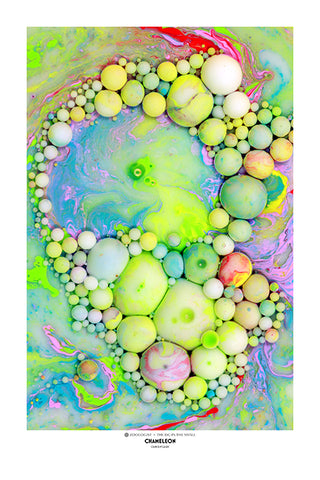 Camouflage is one of the most mind-blowing defense traits any animal can have; the ability to shift colors to match one’s environment. I wanted to represent this in a subtle manner by creating a green-centric piece with hints of color here and there that allows for the mind to wander through. If you look long enough, you might even be able to see the same Chameleon in there as I do!
Camouflage is one of the most mind-blowing defense traits any animal can have; the ability to shift colors to match one’s environment. I wanted to represent this in a subtle manner by creating a green-centric piece with hints of color here and there that allows for the mind to wander through. If you look long enough, you might even be able to see the same Chameleon in there as I do!
We became friends through our common love for fragrance. How did you first get into this passion?
In 2013, I had a major operation which kept me bedridden for a few months. Aside from binge-watching TV shows in bed, I didn’t have much to do.
My then-girlfriend worked at Sephora so she had a decent collection of designer bottles. She happened to keep them next to the bed, so in order to make my time less boring, I started spraying fragrances every day and studied how they evolved over time while I was watching TV shows and movies.
Pretty soon, I became obsessed with it. Within two months, I went from ordering a bottle of Terre d’Hermes to ordering a few Attars by Amouage.
How would you define yourself as a fragrance aficionado?
My approach to fragrance is very singular: I’m obsessed with finding the best fragrance for every note. The best rose, the best incense, the best amber, the best leather… The best everything!
For instance, I don’t need 10 patchouli-based fragrances, Coromandel is enough!
Seb, thank you so much for your time. What if someone wants to keep up with your art?
Well Victor, thank you so much for the opportunity to unite both our artistic worlds.
I really hope Zoologist aficionados will enjoy this collaboration as much as we had fun working on it it!
If anyone wants to know more about my art, they can visit my website, like my Facebook page or simply follow me on Instagram.
February 13, 2019
Could you tell us about yourself?
I was born in Brazil, where I graduated in marketing and advertising before moving to France in 1993. In Paris, I did a Master’s in Semiotics, but graduated in with a degree in Cinematography from an art school. After a couple of years working as a set designer for films in France and Brazil, I decided to go for a new challenge in the perfume world.
Have you always been aspired to be a perfumer?
To be honest, I’ve never thought about this profession, even though smells have always been part of my life. You know, in that period, there were fewer perfumers than astronauts in the world. In 2006, at age of 36, I decided to see a coach for a career orientation, and I discovered the perfumer’s world after the many vocational tests she subjected me to. We worked together for three months. In the end, I was preparing my application for ISIPCA, the perfumery school in Versailles. Only 8 persons were accepted that year into the Fine Fragrance course.
 Above: ISIPCA, a French school for post-graduate studies in perfume, cosmetics products and food flavor formulation
Above: ISIPCA, a French school for post-graduate studies in perfume, cosmetics products and food flavor formulation
You went to perfumery school 13 years ago. Could you tell us about the program?
The program was entirely based on fine fragrances – six hours a day of studying ingredients and making perfume accords in a lab. We learned the basics of perfumery, studied and memorized ingredient after ingredient, and the main accords and structure of iconic perfumes such as Lily of the Valley and Diorissimo, Shalimar and many others. Then, the evolution of materials, regulations, the modern version of each accord and the perfumes’ structure. But when you study very old perfumes, you can’t get a precise idea of their smell, because you can get only the modern versions. So I started to buy vintage perfumes so I could have the original compositions and gain a deep understanding of each formula. Also, the perfumer’s style, the materials available at the time, and the social and political context of the year of the creation, because the industry was very influenced by that. Vent Vert was created in 1945 by the genius Germaine Cellier just after World War II, when people needed to be reconnected with nature. In this fragrance, you have nature in your face. It’s a very green, floral, impressive masterpiece with a huge amount of galbanum.
Some of my classmates from the ISIPCA class were Isabelle Michaud, whom you already know – she’s a Canadian perfumer and owner of Mon Sillage; Octavian Coifan, a historian and perfumer; Christian Dullberg, who has a perfume company compound in Germany, and a perfumer from Taiwan.
During our perfume training, we had access to the Osmothèque and private classes with Jean Kerleo and other perfumers. We also had access to the library, where we could do research on old books with formulas and other treasures of perfumery.
After graduation, you didn't become a perfumer…
After graduation, I didn’t work as a perfumer for big companies because the perfume industry in France was/is saturated and they don’t take people older than 30. If they did, they would send them to work abroad. Just before applying to ISIPCA, I called Frédéric Malle to get his opinion about the school. He advised me to do it and to go to Asia or Brazil (which are big markets).
Wait – you knew Frédéric Malle back then?
I just picked up the phone and called their office. He answered the phone, and I spoke to him. I'd been to his Rue de Grenelle store before and he was often there.
The other reason I didn't work as a perfumer for a big company was that I wanted to remain independent. In 2007 it wasn’t easy for me to start my own business, so I decided to work for perfume brands in the commercial, export and training areas to get more experience of the market. I started at Natura Brasil, passing by Dior, Chanel, Tom Ford, Nina Ricci, Jean-Paul Gaultier, Serge Lutens, Guerlain, Cartier, and many others until arriving at Frédéric Malle, where I stayed for five years. It was one of the greatest experiences of my career. The environment, the quality of each fragrance, the perfumers, the DNA of the company based on the sophistication of great French traditional perfumery, his experience, and his vision… As the company was very small, I was engaged for exporting and training, evaluating perfume concentrates with him, smelling a new project from beginning to end, and understanding the changes of each test until the final version. Sometimes, what you prefer is not what it has to be in the market.
A perfume or aromachemical company needs more than just perfumers for sure.
A perfume company needs many perfumers on their team, but not only for fine fragrances. It needs a team of perfumers for house products, cosmetics, toiletries, and olfactive marketing. The chance to get a job in fine fragrance compared to other areas is maybe about 5% or less. The volume of production in all the other areas is bigger and more important, even though it’s not as prestigious as fine fragrance. Another career is the evaluator, who is someone between the perfumer and the marketing team, responsible for translating all the concepts for both parts, perfumers and marketing.
 Above: Perfumery Class by Daniel Pescio
Above: Perfumery Class by Daniel Pescio
You now hold perfumery classes regularly. Can you tell us more about that?
In 2010, I created my own company and started to build my own lab. I was still working for brands, but when I left Frédéric Malle in 2015 I was able to dedicate myself to develop all my abilities as an independent perfumer. I started creating for independent brands and private customers, being a consultant, teaching and organizing perfume workshops and professional courses for adults and children in France, Brazil, Hungary, Switzerland, Belgium, Italy, Austria and UK and all around the world.
I’m a very curious person, and everything related to the sense of smell and taste interests me a lot. Wine, chocolate, teas, incense… all of them are new languages, but linked to each other. Tasting and smelling are completely connected and enrich our perception. At the beginning of learning how to taste or to smell and describe all the sensations, feelings and notes, it is hard. It needs patience, training and perseverance, but quickly you see that you are improving and the world becomes colourful.
 Above: Kodo Incense Ceremony
Above: Kodo Incense Ceremony
At the moment, I share my time between teaching and creating, but also with my Kōdō practice and research. Koh-Do (the incense ceremony) appeared during the Momoyama period, known as a period of renaissance in Japan. It is considered one of the geido, or refined arts that are supposed to be performed according to certain rules and manners, like the tea ceremony and ikebana. Among aristocrats and high-ranking samurai, it shares popularity with the tea ceremony. In this respect, Japanese incense, or koh, is somewhat different from perfume in western countries. Later, Kōdō branched off into several schools, of which two leading schools survived: the Oie-ryu School and the Shino-ryu School, where I do my learning.
I have to mention how our perfume collaboration came about! In retrospect, I find it fascinating! A few years ago, through a perfume sell/exchange Facebook group, I bought some fragrances that you owned. When I received the package, I found a sample of your own work. When I smelled it, I thought it was excellent, and had to learn more about it from you! My initial reaction was that your work smelled very "French". It's a very abstract feeling. Could you describe your perfume style?
That’s a fantastic way of meeting and then collaborating, because when I sent you the perfumes with the sample, I never imagined you were the owner of Zoologist. I think at this time you had launched just a few scents of your amazing Zoologist collection. And then you told me you were behind this niche brand.
The sample I sent to you was my first creation after leaving Frédéric Malle. Fleur Cannibale was created in 2015, and the following year I participated in a perfume competition organized by the American Society of Perfumers. One hundred perfumers worldwide participated, with only one constraint: to use a minimum of 2% of Australian sandalwood produced by STF. Accordingly, I decided to take make Fleur Cannibale Santal Extrême, with 8% sandalwood oil in the formula. My creation made the semifinal, with 14 others. Fleur Cannibale is a contrasting fragrance, inspired by abstract flowers and orchids from Amazonia, creamy peach, spices, woods, patchouli, amber, musks, vanilla and frankincense.
About my style … it’s hard to define myself. Some people say they can recognize my style in all my perfumes. What’s is important to me is the quality of all the materials (naturals and synthetics), the balance (I’m obsessed with it) and the evolution of the fragrance, because this is the moment when the perfume will tell you a story.

Let's talk about Chameleon! First, I’ll tell you how I came about this concept of Chameleon as a perfume! I've always been fascinated by the fact that the island of Madagascar has the most species of chameleons in the world. And through a documentary on Chanel No. 5 and baking (yes, baking) I learned about the famous Madagascar ylang and vanilla, which are two important export commodities of Madagascar. When I proposed the concept of Chameleon to you, I insisted that it had to include ylang and vanilla. I also proposed that the perfume have a special quality of “colour changing”, which is probably the most notable characteristic of a chameleon. Have you heard of synesthesia – the ability to “see” colour when you smell certain things? I have always wondered if we could create a perfume that “shifts colour” as it develops on our skin.
Chameleon is an amazing project and was a true challenge for me. First, because I wouldn’t have created this perfume based on an ylang-vanilla scent as a main accord. Otherwise, it would be just one more ylang-vanilla perfume on the market. The challenge was to translate this concept to design a fragrance. Also, I was a bit scared by the fruity facets. My first thought was to produce an accord to give the impression of the scent of skin touched by the sun and the salty breeze by the ocean. I chose some "Ylang Ylang Extra" oil from Madagascar, which was already very fruity, and the fruity facets I worked not only with fruity notes, but also with floral notes having fruity facets. That’s the aim of Chameleon. And then you have other flowers, spices, exotic woods, amber, opoponax, vanilla, patchouli, musks…

It’s interesting to talk about synesthesia. I remember during my first class at ISIPCA. We were learning how to describe a scent, because normally we don’t learn to talk about scents. We don’t have a common vocabulary for it. The teacher said, "You can try to link each scent to a specific colour!” Well, I couldn’t do that, but now I do that with children, and it’s amazing! They can say different colours, but often they say them with the same intensity. The synesthesia process is very much used in my Wine, Chocolate and Tea workshops, because you need to use more than one sense to get a full perception of something. For example, when you take a wine, you have to describe the colour, whether it’s bright or opaque, and then you smell and then you taste. For this experience, you use four of your five senses: the view, the smell, the taste and the touch with our tongue, which has taste buds responsible for the perception of temperature and texture. When you are aware of it, the experience is very rich. You can enjoy every single moment of each sensation provided by your senses.
As we developed the scent, I thought the synesthesia concept might be too difficult to realize. (I don't have synesthesia, and the colours people "see" by smelling are very subjective.) However, you had a different idea of what Chameleon could be, and you persuaded me with your unique vision.
Yes, synesthesia and sense of smell are very personal, very subjective. There is no right or wrong, but only personal or technical way to describe a scent. If you say green for patchouli, I would say you can keep it as a personal reference. But the smell is not considered green to professionals.
The chameleon’s skin is a mirror of nature. That was what I tried to translate into a fragrance. The concept of the skin being the mirror of everything you can have on the island of Madagascar. To make this “skin accord”, I put Ylang Ylang Extra Madagascar oil with a lot of Salicylates and Cashmeran. These makes up almost 40% of the fragrance composition.
I worked very carefully with the vanilla accord, with musks and opoponax. I wouldn’t want to produce the same effect that we have in most ylang perfumes. Another challenge for this project was to give an abstract feeling, despite the presence of a huge amount of ylang in the formula.

People might say that Chameleon is a tropical fruity scent, but I think it is quite different from the typical tropical fruit scents I’ve come across before.
Ylang ylang is one of my favourite flowers. It has proper fruity facets, but it is also animalic, different from the indolic found in flowers such as jasmine, Lily of the Valley or orange blossom. Most of the ylang fragrances are very "Monoi", i.e., a vanilla scent with a huge amount of Hedione. And, in some cases, with woody facets of gaiacwood or very fruity and sugary. So, the moment I got the Chameleon brief, I thought of all these aspects and started thinking what I would translate into this creation. It was the beginning of a trip in my mind through Madagascar, feeling everything I could find on this tropical island. Beaches, sun, heat, ocean breeze, skin scent, sensuality, exotic woods, fruits, spices, and the daily life of the chameleon. My approach was to make the ylang ylang into a musky-skin-salty-sunny accord in the centre of the fragrance, like the solar orbit, with green-acidic exotic fruity facets combined with violet leaves and frangipani. Cashmeran and Salicylates are very important in this accord as the abstract feeling I would give to this fragrance, because of the effects of chameleons in nature. Sometimes it’s obvious they are there, but we can’t really see them.
Another point which is important is the evolution of the fragrance into something smooth, calm, with this musk-vanilla-amber feeling. It reminds me of chameleons losing the reflections of nature and becoming white.
What is next for you?
The most important project for this year is going to be in Japan.
In 2017, I started practicing Kōdō in Japan and France, and last year I decided to make an olfactive project related to this Japanese art and presented it to the Villa Kujoyama’s art project competition. The Villa Kujoyama is a French public institution set in the mountains of Kyoto. It’s a multicultural place of interdisciplinary exchange and aims to strengthen intercultural dialogue between France and Japan. Villa Kujoyama is the equivalent of Villa Medicis in Rome.
My project, "Listening the scents or the Art of the invisible", was the winner in the Fashion and Perfume category. I will be in Japan to do research, present the project and organize some perfume workshops from September to the end of December 2019.
Before that, I will be doing some fragrance creations for independent artists and brands, bespoke perfumes, education and training, consulting for brands and private projects, perfume, wine and chocolate workshops, and organizing my project to launch my perfume brand in 2020.
Wow, that’s wonderful! I can’t wait to smell your own brand of perfumes in the future!

Zoologist Chameleon will be released on March 15th, 2019

